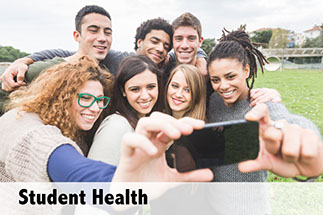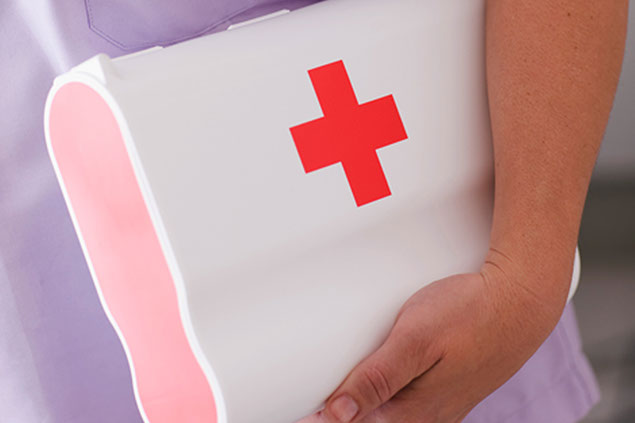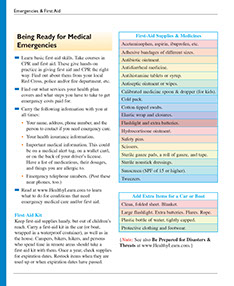CONDITIONS
SYMPTOM CHECKER
Male
Female
Child
Arm, Hand & Shoulder Concerns
Legs & Feet Concerns
Dental & Mouth Concerns
Ear & Nose
Eye Conditions
Head Conditions
Arm, Hand & Shoulder Concerns
Legs & Feet Concerns
Front
Back
Arm, Hand & Shoulder Concerns
Dental & Mouth Concerns
Ear & Nose
Eye Conditions
Head Conditions
Arm, Hand & Shoulder Concerns
Dental & Mouth Concerns
Ear & Nose
Eye Conditions
Head Conditions
Front
Back
Arm, Hand & Shoulder Concerns
Neck Links
Head & Neck Concerns
Arm, Hand & Shoulder Concerns
Neck Links
Head & Neck Concerns
Front
Back
Online Clinic
Wise Healthcare
Being Ready for Medical Emergencies
Print on Demand
• Learn basic first-aid skills. Take courses in CPR and first aid. These give hands-on practice in giving first aid and CPR the right way. Find out about them from your local Red Cross, police and/or fire department, etc.
• Find out what services your health plan covers and what steps you have to take to get emergency costs paid for.
• Carry the following information with you at all times:
– Your name, address, phone number, and the person to contact if you need emergency care.
– Your health insurance information.
– Important medical information. This could be on a medical alert tag, on a wallet card, or on the back of your driver’s license. Have a list of medications, their dosages, and things you are allergic to.
– Emergency telephone numbers. (Post these near phones, too.)
Keep first-aid supplies handy, but out of children’s reach. Carry a first-aid kit in the car (or boat, wrapped in a waterproof container), as well as in the house. Campers, bikers, hikers, and persons who spend time in remote areas should take a first-aid kit with them. Once a year, check supplies for expiration dates. Restock items when they are used up or when expiration dates have passed.
First-Aid Supplies & Medicines
• Acetaminophen, aspirin, ibuprofen, etc.
• Adhesive bandages of different sizes.
• Antibiotic ointment.
• Antidiarrheal medicine.
• Antihistamine tablets or syrup.
• Antiseptic ointment or wipes.
• Calibrated medicine spoon & dropper (for kids).
• Cold pack.
• Cotton-tipped swabs.
• Elastic wrap and closures.
• Flashlight and extra batteries.
• Hydrocortisone ointment.
• Safety pins.
• Scissors.
• Sterile gauze pads, a roll of gauze, and tape.
• Sterile nonstick dressings.
• Sunscreen (SPF of 15 or higher).
• Tweezers.
Add Extra Items for a Car or Boat
• Clean, folded sheet. Blanket.
• Large flashlight. Extra batteries. Flares. Rope.
• Plastic bottle of water, tightly capped.
• Protective clothing and footwear.
This website is not meant to substitute for expert medical advice or treatment. Follow your doctor’s or health care provider’s advice if it differs from what is given in this guide.
The American Institute for Preventive Medicine (AIPM) is not responsible for the availability or content of external sites, nor does AIPM endorse them. Also, it is the responsibility of the user to examine the copyright and licensing restrictions of external pages and to secure all necessary permission.
The content on this website is proprietary. You may not modify, copy, reproduce, republish, upload, post, transmit, or distribute, in any manner, the material on the website without the written permission of AIPM.
2021 © American Institute for Preventive Medicine - All Rights Reserved. Disclaimer | www.HealthyLife.com

















































